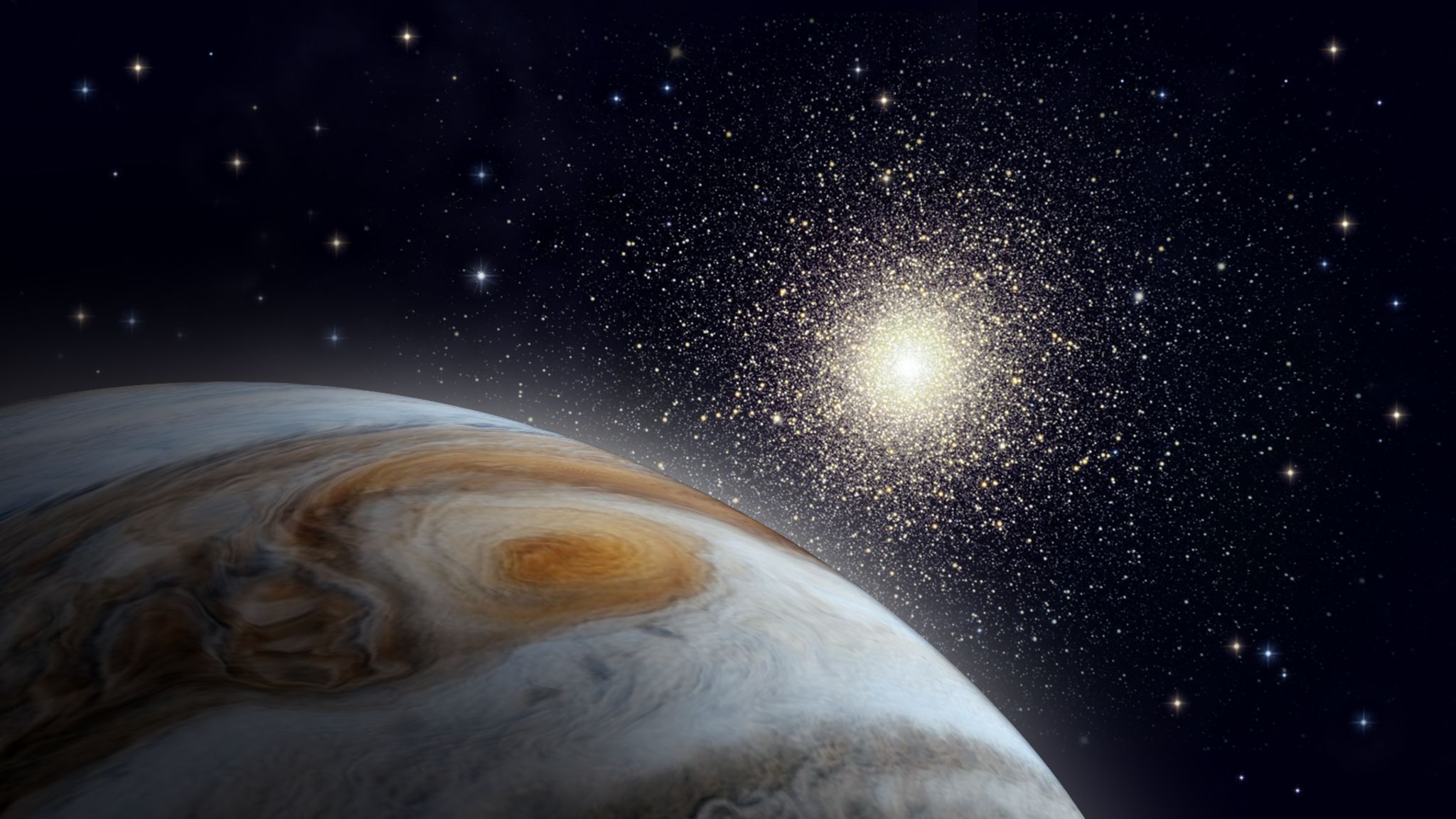Jupiter Approaches a Globular Cluster
One of the brightest objects in the evening sky of this week is Jupiter. On the evenings surrounding Monday, August 26, Jupiter's apparent motion will carry it close past a magnitude 7.2 globular star cluster designated NGC 6235, which is located in the constellation of Ophiuchus.
As the sky begins to darken, look for the giant planet sitting less than a third of the way up the southern sky. Hour by hour, Jupiter will sink lower — then set in the west just before 1 am local time.
Here’s a fun exercise on the next clear night once the sky is nice and dark. Grab your binoculars or telescope at low magnification and look just a fraction of a finger’s width to the left (celestial east) of Jupiter for a dim, fuzzy patch. What you are seeing is a globular star cluster, a mass of thousands of stars arranged by their mutual gravity into a densely packed sphere. This cluster, one of hundreds known to orbit our Milky Way galaxy, is named NGC 6235 (from the New General Catalogue of deep-sky objects). It is located 38,000 light years away from our solar system! When you see it, you are looking into the distant past. The light from those stars began traveling towards us around the time that Neanderthals died out!
Jupiter is moving steadily towards that cluster, and will pass in front of it next Monday. So the later in the week you look, the closer Jupiter will be to the cluster. Both objects will fit within the field of view of a backyard telescope at high power. Jupiter is overwhelmingly bright compared to the cluster. To better see the dim, fuzzy globular cluster, try placing Jupiter just outside your field of view. Remember that most telescopes will flip the view around. So check both to the left and right of the planet.
Our comprehensive astronomy guide will help you find the current position of celestial objects in the sky above you.
Enjoy stargazing with Star Walk 2 app!


